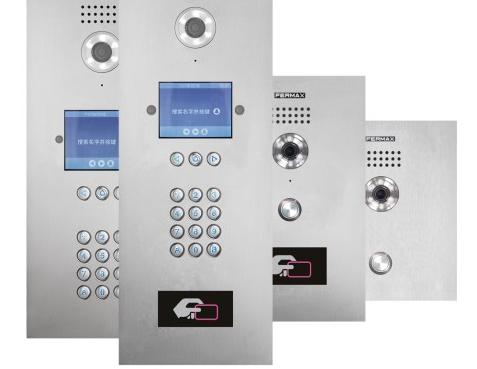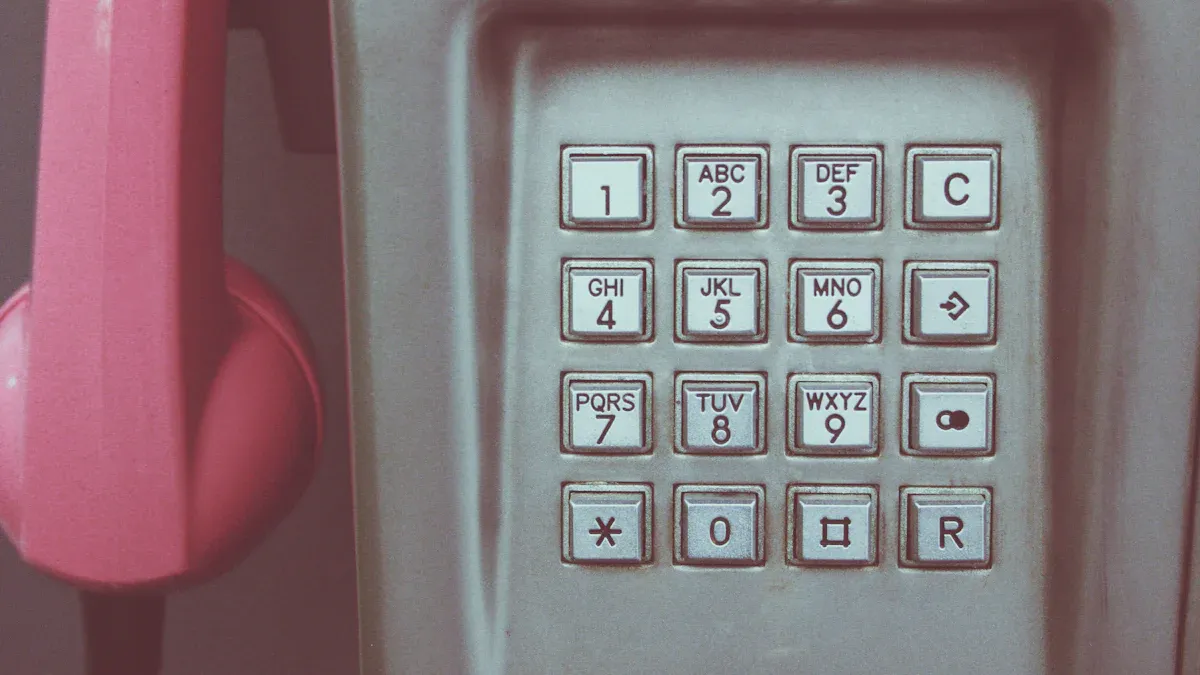
Eine Tastatur dient als wichtiges Eingabegerät, sodass Benutzer Daten, Befehle oder Sicherheitscodes in verschiedene Systeme eingeben können. Die Anwendungen umfassen Branchen, von der Unterhaltungselektronik bis hin zu Industriemaschinen. Die wachsende Nachfrage nach Geräten wie numerischen Tastaturen spiegelt ihre Bedeutung wider. Zum Beispiel:
- Der USB Numeric -Tastaturmarkt im Wert von 320 Mio. USD im Jahr 2024 wird voraussichtlich bis 2033 in Höhe von 490 Mio. USD erreichen.
- Der Markt wird voraussichtlich zwischen 2026 und 2033 auf einem CAGR von 5.1% wachsen.
In industriellen Umgebungen gewährleisten langlebige Designs wie die industrielle Metalltastatur auch in harten Umgebungen Zuverlässigkeit und Effizienz. Diese Fortschritte unterstreichen die Rolle der Tastatur bei der Verbesserung der Produktivität und Sicherheit.
Key Takeaways
- Tastaturen sind wichtige Tools, mit denen Menschen einfach Daten eingeben können.
- Körperliche Tastaturen sind stark und langlebig, perfekt für harte Jobs.
- Neue Technik wie KI und Touch -Feedback verbessert die Tastaturdesigns.
Tastaturfunktionalität und Vorteile
Wie Tastaturen funktionieren
Tastaturen fungieren als Schnittstelle zwischen Benutzern und Geräten und aktivieren effiziente Dateneingaben. Wenn ein Benutzer eine Taste drückt, erzeugt die Tastatur ein elektrisches Signal, das der spezifischen Taste entspricht. Dieses Signal wird dann an den Prozessor des Geräts übertragen, der die Eingabe interpretiert und die gewünschte Aktion ausführt.
In technischer Hinsicht beruhen Tastaturen auf eine Kombination aus Hardware- und Softwareprozessen, um die Benutzereingabe effektiv zu erfassen und zu übertragen. Zum Beispiel:
- Keylogging -Techniken schneiden Tastenanschläge mithilfe von Methoden wie dem Hooking -API -Rückruf oder dem Lesen von Rohtasten -Tastenanschlägen ab.
- In Windows-basierten Systemen wird die Benutzereingabe als Nachrichten an Anwendungen gesendet. Diese Nachrichten werden auf verschiedenen Ebenen verarbeitet, einschließlich der Anwendung, des Formulars und der Steuerung.
- Die Ereignisse werden angehoben, um die Tastatureingaben zu verarbeiten, um eine genaue und reaktionsschnelle Datenerfassung zu gewährleisten.
Diese nahtlose Interaktion zwischen Hardware und Software stellt sicher, dass Tastaturen zuverlässig und effiziente Tools für die Dateneingabe in verschiedenen Anwendungen in verschiedenen Anwendungen bleiben.
Vorteile von Tastaturen gegenüber anderen Eingabemethoden
Tastaturen bieten mehrere Vorteile gegenüber alternativen Eingabemethoden wie Touchscreens oder Spracherkennungssystemen. Ihre Einfachheit und Zuverlässigkeit machen sie in vielen Szenarien zu einer bevorzugten Wahl.
Eine vergleichende Studie unterstreicht die Leistung von Tastaturen gegen andere Eingabegeräte:
| Studie | Eingabegerät | Weit (%) | FRR (%) | EER (%) |
|---|---|---|---|---|
| 26 | Modifiziertes atm num-pad | 15 | 0 | 10 |
| 33 | Apple -Tastatur | 0.03 | 1.51 | 1 |
| 47 | Normale Tastatur | 0.95 | 5.6 | 94.8* |
Die Tabelle zeigt, dass Tastaturen, insbesondere solche für bestimmte Anwendungen wie Geldautomaten, eine niedrige falsche Abstoßungsrate (FRR) und eine angemessene gleiche Fehlerrate (EER) beibehalten. Diese Zuverlässigkeit sorgt selbst in kritischen Umgebungen durch eine konsequente Leistung.
Darüber hinaus beruhen Tastaturen nicht auf externe Faktoren wie Sprachklarheit oder Berührungsempfindlichkeit, was sie vielseitiger macht. Geräte wie die industrielle Metall -Tastatur verbessern die Haltbarkeit weiter und ermöglichen es ihnen, unter harten Bedingungen effektiv zu funktionieren.
Tastaturen zur Verbesserung der Sicherheit und Effizienz
Tastaturen spielen eine entscheidende Rolle bei der Verbesserung der Sicherheit und der betrieblichen Effizienz. In Sicherheitssystemen können Benutzer eindeutige Codes eingeben, um einen eingeschränkten Zugriff auf sensible Bereiche oder Informationen sicherzustellen. Die physische Natur der Tastaturen verringert auch das Risiko eines nicht autorisierten Zugangs im Vergleich zu drahtlosen oder sprachbasierten Systemen.
Industrielle Umgebungen profitieren erheblich von Tastaturen wie der industriellen Metall -Tastatur. Diese Geräte sind so konzipiert, dass sie extremen Temperaturen, Feuchtigkeit und physikalischen Auswirkungen standhalten, um einen ununterbrochenen Betrieb zu gewährleisten. Ihre robuste Konstruktion minimiert Ausfallzeiten und verbessert die Gesamtproduktivität.
Zusätzlich rationalisieren Tastaturen Workflows durch eine einfache und intuitive Eingabemethode. Diese Einfachheit verringert die Wahrscheinlichkeit von Fehlern und spart Zeit und Ressourcen sowohl in Verbraucher- als auch in industriellen Anwendungen.
Arten von Tastaturen und deren Anwendungen

Physikalische Tastaturen (numerische, alphanumerische, industrielle Metall -Tastatur)
Physikalische Tastaturen bleiben ein Eckpfeiler der Dateneingaben in verschiedenen Branchen. Diese Tastaturen umfassen numerische Tastaturen, alphanumerische Tastaturen und spezielle Designs wie die Industrial Metal -Tastatur. Jeder Typ dient unterschiedliche Zwecke und bietet einzigartige Funktionen, die auf bestimmte Anwendungen zugeschnitten sind.
Numerische Tastaturen, die häufig auf Taschenrechnern, Geldautomaten und Point-of-Sale-Systemen zu finden sind, bieten eine einfache Schnittstelle für die numerische Dateneingabe. Alphanumerische Tastaturen, die häufig in Mobiltelefonen und Fernbedienungen verwendet werden, kombinieren Buchstaben und Zahlen und ermöglichen mehr vielseitigeren Eingaboptionen.
Die Industrie -Metall -Tastatur zeichnet sich durch ihre Haltbarkeit und Zuverlässigkeit in harten Umgebungen aus. Aus Edelstahl errichtet, widersteht es dem körperlichen Schock, Wasser und Vandalismus. Sein robustes Design macht es ideal für schwere Industrie-, Kiosken- und Verkehrskontrollsysteme. Membranschalter, eine Art physikalische Tastatur, verbessern die Funktionalität weiter durch Einbeziehung laminierter Schichten von Isolier- und Leitungsmaterialien. Diese Schalter bieten eine kostengünstige, robuste Lösung für Menschen zu Maschinen.
| Besonderheit | Beschreibung |
|---|---|
| Material | Edelstahl |
| Widerstand | Vandalsicher, wasserfest |
| Tipperfahrung | Angenehm mit gutem taktilem Feedback |
| Anwendungen | Schwerindustrie, Informations Terminals, Kioske |
| Robustheit | Resistent gegen physischer Schock, Flüssigkeiten, hohe Temperaturen |
Physikalische Tastaturen zeichnen sich in Umgebungen aus, in denen Zuverlässigkeit und taktiles Feedback von entscheidender Bedeutung sind. Ihre Fähigkeit, extremen Bedingungen standzuhalten, sorgt für den ununterbrochenen Betrieb und macht sie in industriellen und im Freien unabdingbaren Anwendungen unverzichtbar.
Virtuelle und berührungsempfindliche Tastaturen
Virtuelle und berührungsempfindliche Tastaturen haben die Benutzeroberflächen in modernen Geräten revolutioniert. Diese Tastaturen, die in Touchscreens integriert sind, bieten eine schlanke und anpassbare Alternative zu physischen Tastaturen. Smartphones, Tablets und intelligente Geräte nutzen diese Technologie häufig, um die Benutzererfahrung zu verbessern.
Eine Usability-Studie unterstreicht die Vorteile von berührungsbasierten Schnittstellen. Gut konzipierte Touchscreens erleichtern die nahtlose Aufgabenabschluss und bieten Flexibilität, mit denen physische Tastatur nicht übereinstimmt. Benutzer können Layouts anpassen, zwischen Eingabemodi wechseln und mühelos auf zusätzliche Funktionen zugreifen.
Virtuelle Tastaturen fehlen jedoch möglicherweise das taktile Feedback physikalischer Tastaturen, die einige Benutzer für die Genauigkeit unerlässlich empfinden. In Umgebungen, die Präzision oder Haltbarkeit erfordern, wie z. B. industrielle Umgebungen, bleiben physikalische Tastaturen wie die industrielle Metall -Tastatur die bevorzugte Wahl.
| Technik | Benutzerpräferenz (%) | Texteintragsgeschwindigkeitsvergleich | Benutzerfreundlichkeitsbewertung |
|---|---|---|---|
| Rekonfiguration | 44.4% | Höher als die Grundlinie | Signifikant höher |
| Multimodal | 44.4% | Höher als die Grundlinie | Signifikant höher |
| Grundlinie | N / A | Niedriger als Rekonfiguration | Untere |
Virtuelle Tastaturen zeichnen sich in Anpassungsfähigkeit und Ästhetik aus, was sie ideal für die Unterhaltungselektronik macht. Das Vertrauen in die Berührungsempfindlichkeit und das Softwaredesign kann jedoch ihre Effektivität in anspruchsvollen Umgebungen einschränken.
Spezialisierte Tastaturen für Sicherheit und industrielle Verwendung
Spezialisierte Tastaturen befassen sich mit den einzigartigen Anforderungen von Sicherheitssystemen und industriellen Anwendungen. Diese Tastaturen enthalten häufig erweiterte Funktionen, um die Funktionalität und Zuverlässigkeit zu verbessern.
In Sicherheitssystemen ermöglichen Tastaturen den Benutzern, eindeutige Codes für einen eingeschränkten Zugriff einzugeben. Geräte wie die Industrie-Metall-Tastatur bieten zusätzlichen Schutz durch vandalsichere Designs und Wasserbeständigkeit. Diese Funktionen gewährleisten einen sicheren Betrieb auch in Umgebungen im Freien oder in Hochrisiken.
Industrie -Tastaturen priorisieren die Haltbarkeit und Effizienz. Sie halten extremen Temperaturen, Feuchtigkeit und körperlichen Auswirkungen wider, um eine konsequente Leistung zu gewährleisten. Die Anwendungen reichen von Fertigungsanlagen bis hin zu Schulungszentren, in denen robuste Eingangsgeräte für die Produktivität von wesentlicher Bedeutung sind.
Spezialisierte Tastaturen integrieren auch fortschrittliche Technologien, wie z. B. Hintergrundbeleuchtungstasten für Umgebungen mit schlechten Lichtverhältnissen und programmierbare Funktionen für maßgeschneiderte Workflows. Diese Innovationen verbessern die Benutzerfreundlichkeit und machen sie sowohl in Sicherheits- als auch in industriellen Kontexten unverzichtbar.
Tip: Bei der Auswahl einer Tastatur für den industriellen oder Sicherheitsgebrauch berücksichtigen Sie Faktoren wie Material, Widerstand gegen Umweltbedingungen und einfache Integration mit vorhandenen Systemen.
Technologische Fortschritte in Tastaturen
Übergang von mechanisch zu digitalen Tastaturen
Die Entwicklung der Tastaturen spiegelt die breitere Geschichte der Typisierungstechnologie wider. Frühe Geräte wie das Comptometer und das Dalton-Hinzufügen haben benutzerfreundliche Layouts und logische Schlüsselanordnung eingeführt. Diese Innovationen priorisierten Effizienz und Usability und bildeten die Voraussetzungen für moderne digitale Tastaturen. In den neunziger Jahren zeigten Handheld -Geräte wie das HP95LX kompakte QWERTY -Tastaturen, die eine zentrale Verschiebung in Richtung Mobile Computing markierten. Dieser Übergang von mechanischer zu digitalen Formaten spiegelt die wachsende Nachfrage nach tragbaren und intuitiven Eingabelösungen wider. Die heutigen digitalen Tastaturen mit ihren elektronischen Schnittstellen bieten im Vergleich zu ihren mechanischen Vorgängern schnellere Reaktionszeiten und größere Zuverlässigkeit.
Integration von Touchscreens und haptischem Feedback
Moderne Tastaturen haben Touchscreens und haptisches Feedback angenommen, um die Benutzererfahrung zu verbessern. Die kapazitive Touchscreen -Technologie ist zu einem Eckpfeiler dieses Fortschritts geworden und bietet Haltbarkeit und Präzision. Die Integration des haptischen Feedbacks verbessert die Navigationsgenauigkeit weiter und reduziert die Fehler während der Dateneingabe. Diese taktile Reaktion schließt die Lücke zwischen digitalen und physikalischen Interaktionen und schafft ein eindringlicheres Erlebnis. Zum Beispiel können Benutzer Vibrationen spüren, die einen Herzschlag in Gesundheits -Apps oder den Rückstoß einer Waffe in Gaming -Anwendungen simulieren. Diese Innovationen verbessern nicht nur die Funktionalität, sondern richten sich auch an verschiedene Benutzerbedürfnisse, von Unterhaltung bis hin zu professionellen Aufgaben.
| Besonderheit | Nutzen |
|---|---|
| Kapazitiver Touchscreen | Verbesserte Haltbarkeit und Leistung |
| Haptisches Feedback | Verbesserte Genauigkeit und intuitives Engagement |
Zukünftige Trends in der Tastaturtechnologie
Die Zukunft der Tastaturen liegt in der Integration fortschrittlicher Technologien wie künstlicher Intelligenz und biometrischer Authentifizierung. KI-betriebene Tastaturen könnten Layouts basierend auf dem Benutzerverhalten anpassen und die Effizienz optimieren. Biometrische Funktionen wie Fingerabdruck oder Retina -Scannen versprechen eine verbesserte Sicherheit für sensible Anwendungen. Zusätzlich entstehen flexible und faltbare Tastaturen und bieten eine Portabilität ohne Kompromisse. Diese Trends zeigen, dass sich die Tastatur weiterentwickelt und Innovationen mit der Praktikabilität verbinden, um den Anforderungen einer zunehmend digitalen Welt zu erfüllen.
Tastaturen sind für Dateneingaben weiterhin unverzichtbar und bieten unübertroffene Einfachheit, Zuverlässigkeit und Sicherheit. Ihre Anwendungen umfassen Branchen, von Unterhaltungselektronik bis hin zu Industriemaschinen.
- Vielseitigkeit: Tastaturen passen sich an verschiedene Umgebungen an und gewährleisten die Funktionalität sowohl bei alltäglichen als auch in speziellen Aufgaben.
- Innovation: Fortschritte wie haptisches Feedback und KI -Integration versprechen aufregende Möglichkeiten für zukünftige Designs.
Schlüssel zum Mitnehmen: Tastaturen entwickeln sich weiterentwickelt und verbinden Innovationen mit der Praktikabilität, um modernen Anforderungen zu erfüllen.
FAQ
Was sind die Hauptunterschiede zwischen physischen und virtuellen Tastaturen?
Physikalische Tastaturen bieten taktiles Feedback und Haltbarkeit, während virtuelle Tastaturen Flexibilität und Anpassung bieten. Jedes passt zu bestimmten Umgebungen und Benutzerpräferenzen.
Wie verbessern Tastaturen die Sicherheit in sensiblen Anwendungen?
Tastaturen ermöglichen einen sicheren Zugriff durch eindeutige Codes oder biometrische Integration. Ihre physische Natur verringert Risiken, die mit drahtlosen oder sprachbasierten Systemen verbunden sind.
Können Tastaturen extreme industrielle Bedingungen standhalten?
Industrie -Tastaturen wie Metall, widerstehen physischen Schock, Feuchtigkeit und hohen Temperaturen. Ihr robustes Design sorgt für eine zuverlässige Leistung in anspruchsvollen Umgebungen.

